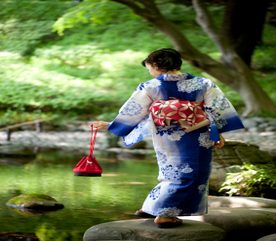Landscape Design: Your Own Japanese Garden
Japanese culture is known for its elegant appreciation for nature and simplicty. If you look closely you’ll notice that their garden design is perfect example of what their culture represents; peaceful, relaxing and unique. While building a Japanese garden be can challenge, the results are stunning and will reassure you that it was worth every minute of the effort.

Ideal for small spaces, a Japanese garden involves the harmonious use of water, plants and stone. A pleasure to look at year round, it needs only some attentive pruning and weeding. By combining native and Asian plants, you can adapt this soothing garden style to your climate and location.
Don’t Overdo It
Shibusa is a word that the Japanese often use to describe their gardens. It has many meanings, but it mainly implies restraint, good taste and elegant simplicity. Limit your choice of materials.
Water is a Mandatory Element
Whether running or still, water is essential to a Japanese garden. Install a birdbath, a small fountain or a tiny shallow pond with a few goldfish. Always make sure the water is clean.
Look for Contrasts
Look for contrasts when choosing plants and stones. Use lighter shades against darker shades. Mix fine and bold textures. And remember that in Japanese gardening, the emphasis is on foliage rather than flowers, although you can add a few flowering plants to punctuate the seasons.
Let a Path Meander
In a strolling or teahouse garden, the path becomes the garden. Stepping stones control the rate at which you proceed and the spacing of plantings. The long axis of the stones is generally perpendicular to the direction of movement. Interject larger stepping stones where you want to pause and view a special feature.
Select the Right Stones
Stones for the background should be fairly large and carefully chosen. Choose either blocks of rock with a distinctive outline or large, table-like slabs laid on the ground. You can also add pebbles or river gravel, which are easy to maintain.
Gravel Guidelines
Use off white instead of pure white, which can produce a blinding glare. Smaller gravel holds patterns best. Before spreading, place a woven geotextile underneath. This material prevents weeds, but unlike black plastic, it lets air and water pass through. Rake carefully to make sure that no patches of the material show through the gravel
Choosing Plants
When choosing plants for a Japanese-style garden, combine Asian natives with indigenous specimens. Plants appropriate for this style include bamboo, cherry, Japanese maple (acer palmatum), pine, azalea, camellia, ginkgo, wisteria, Japanese iris and various ferns.
Compact, Mound-Forming Plants
Compact, mound-forming plants are useful in creating rolling contours that suggest hills or clouds. Good choices include Japanese holly (Ilex crenata), inkberry holly (I. glabra), Swiss mountain pine (Pinus mugo), Korean boxwood (Buxus microphylla var. koreana) and dwarf red barberry (Berberis thunbergii; Crimson Pygmy).



